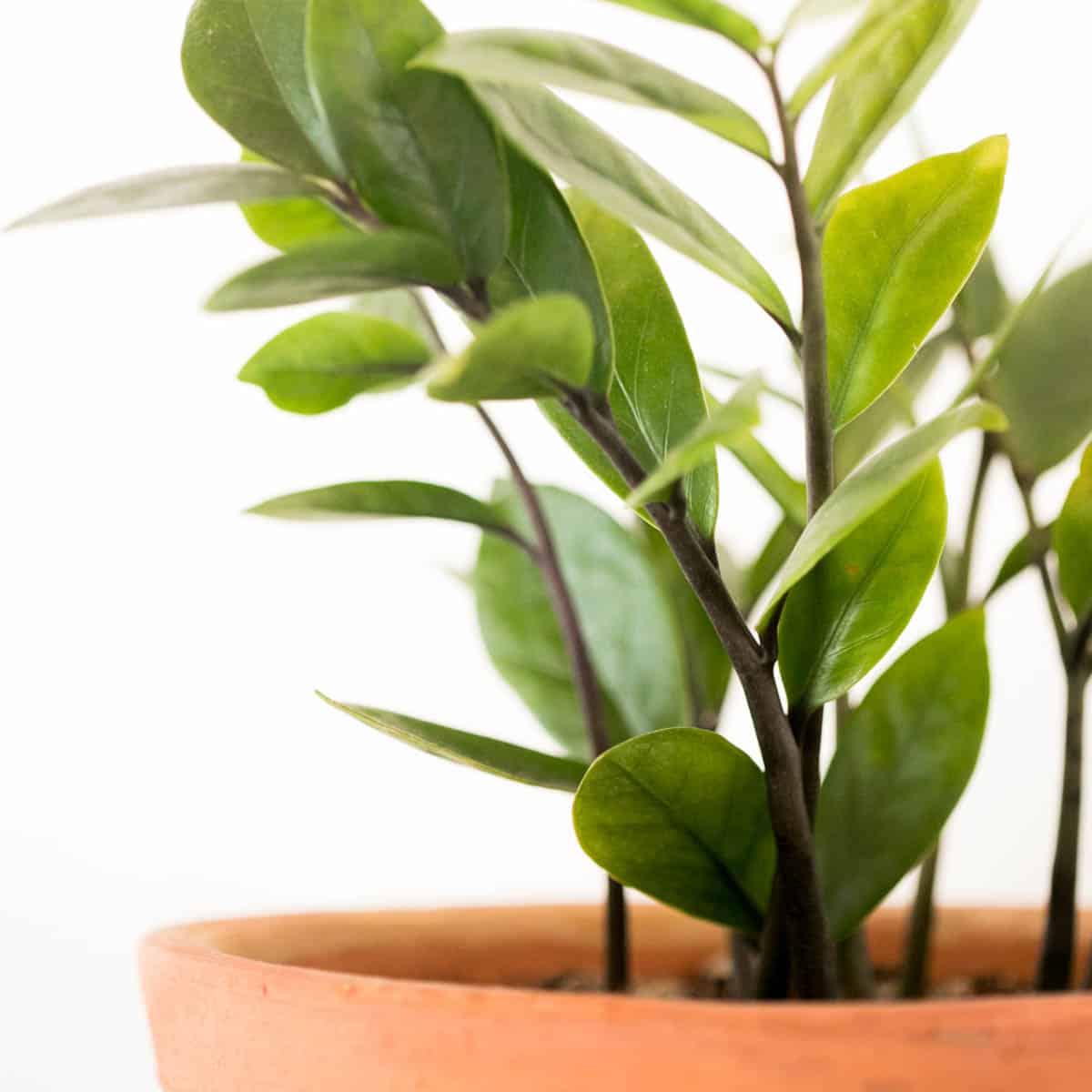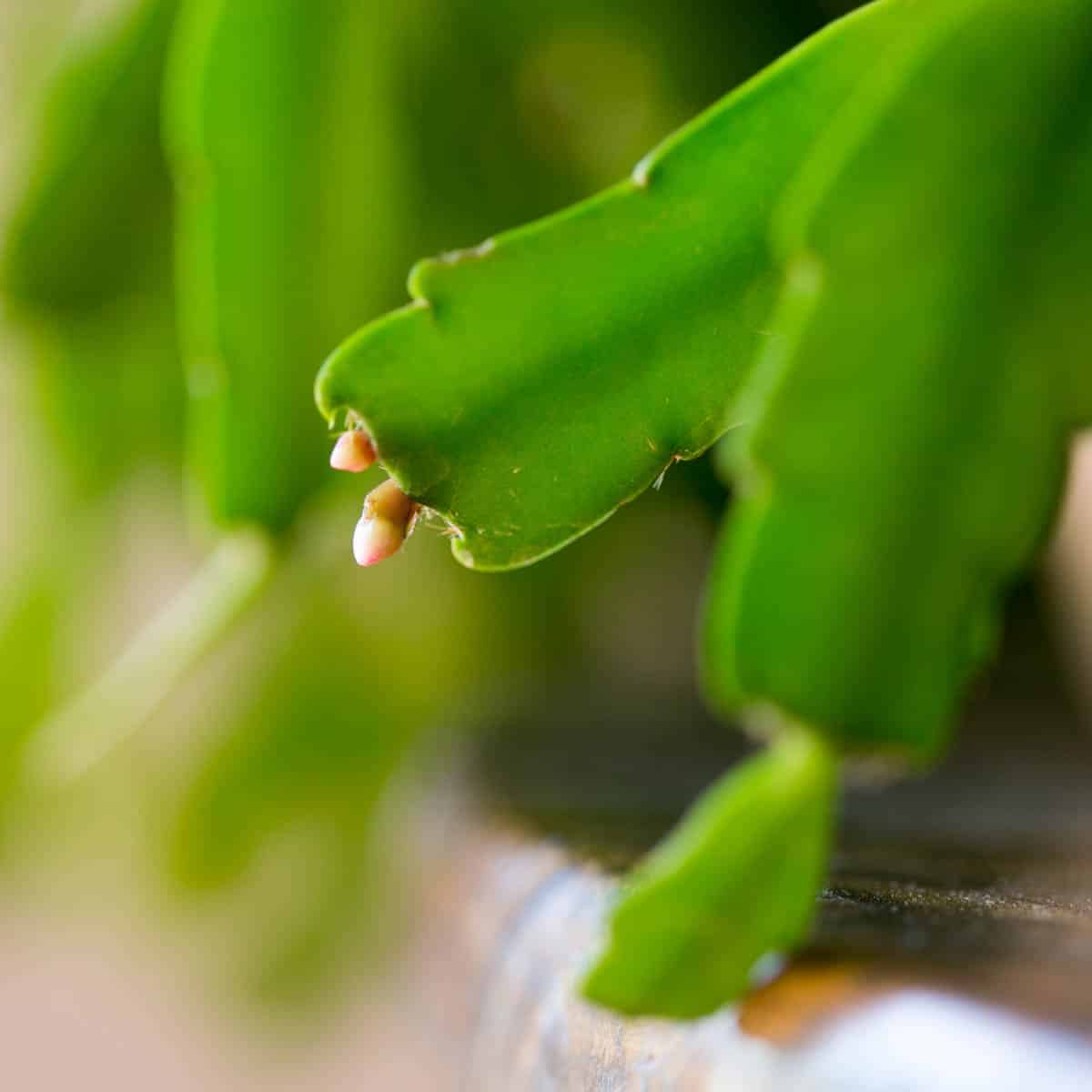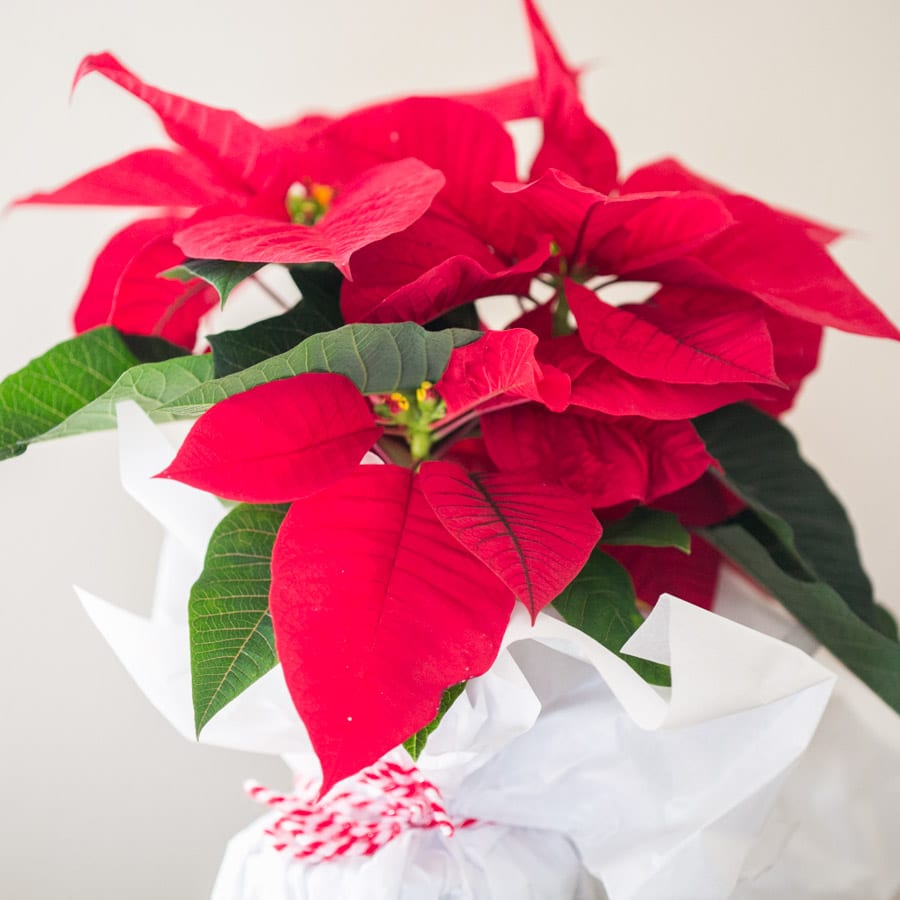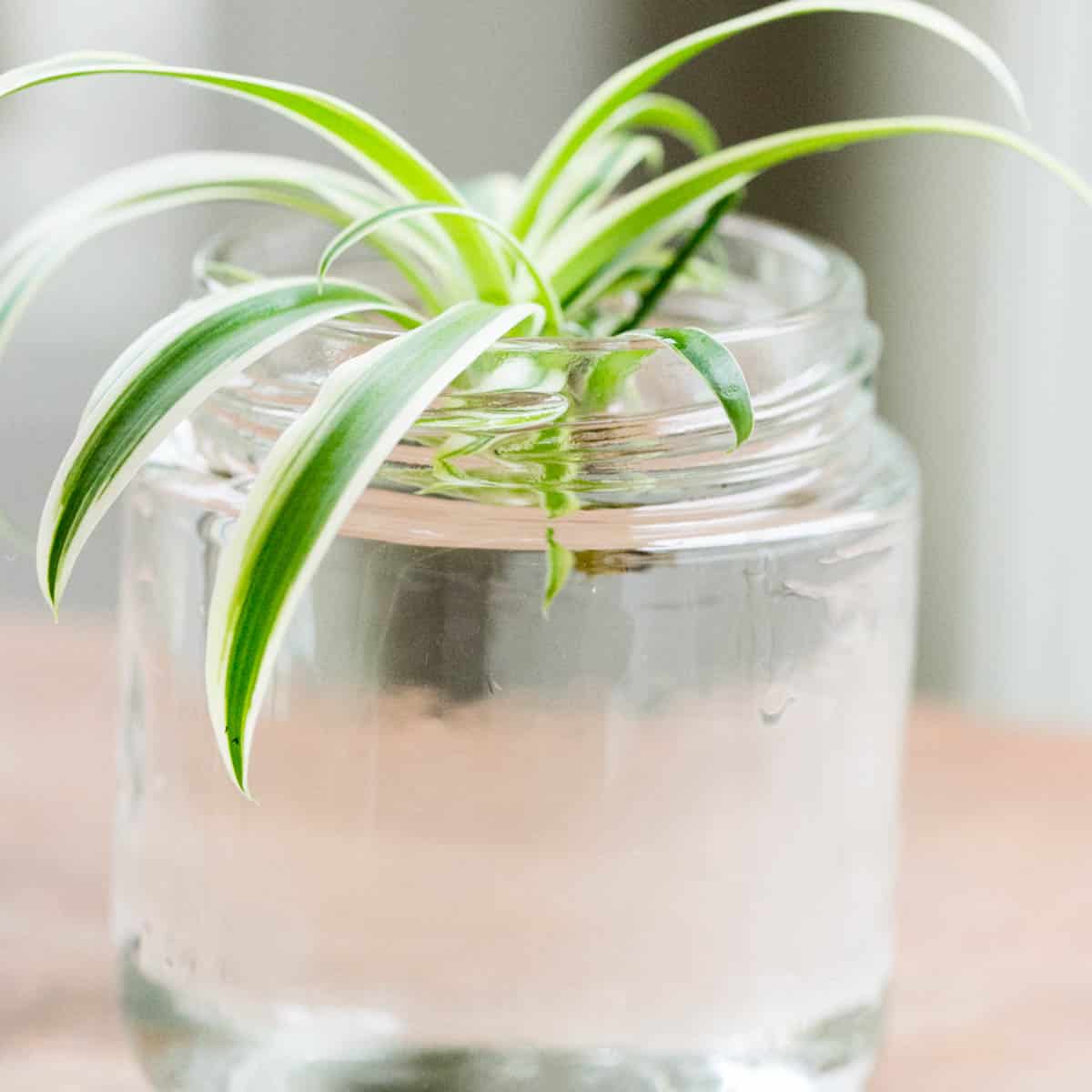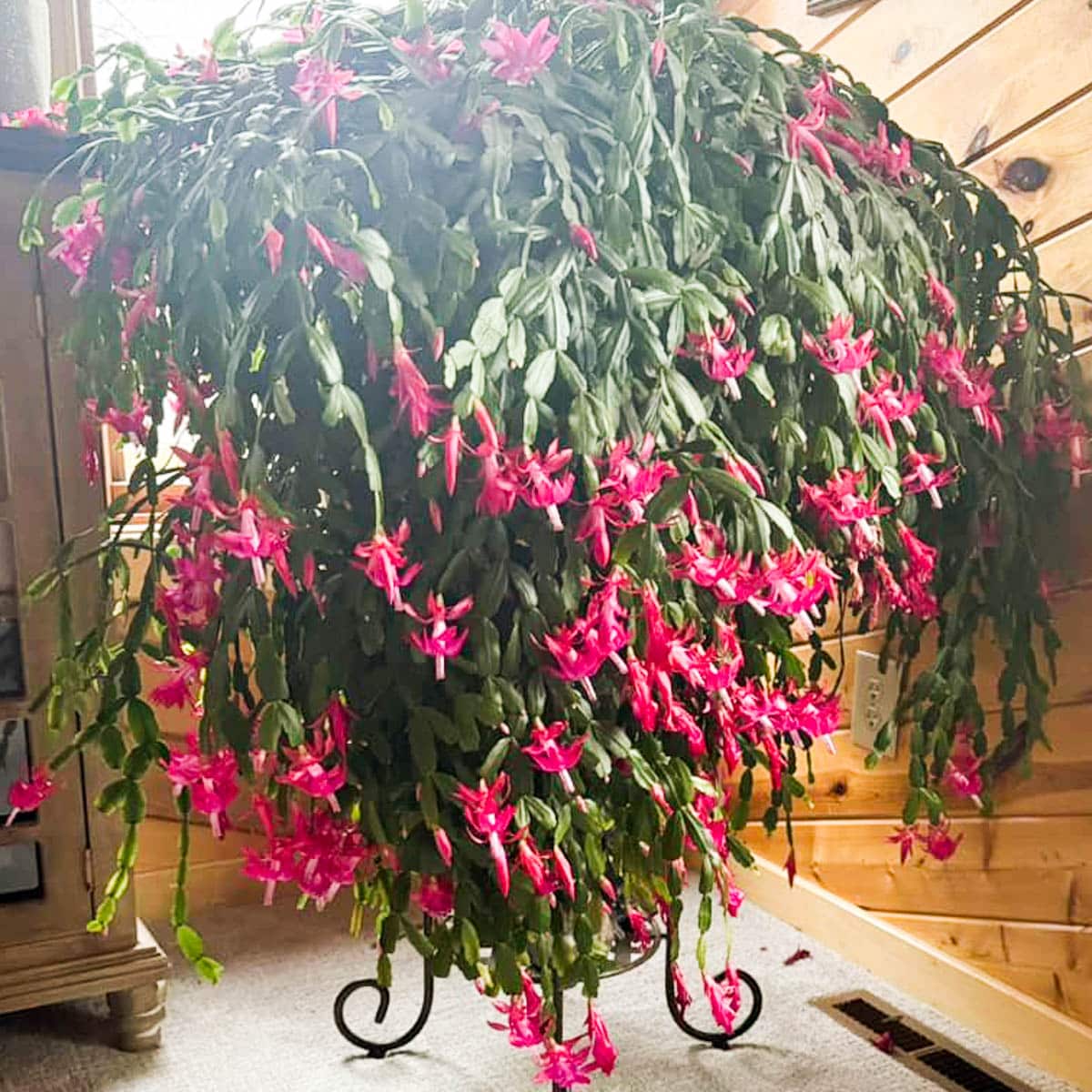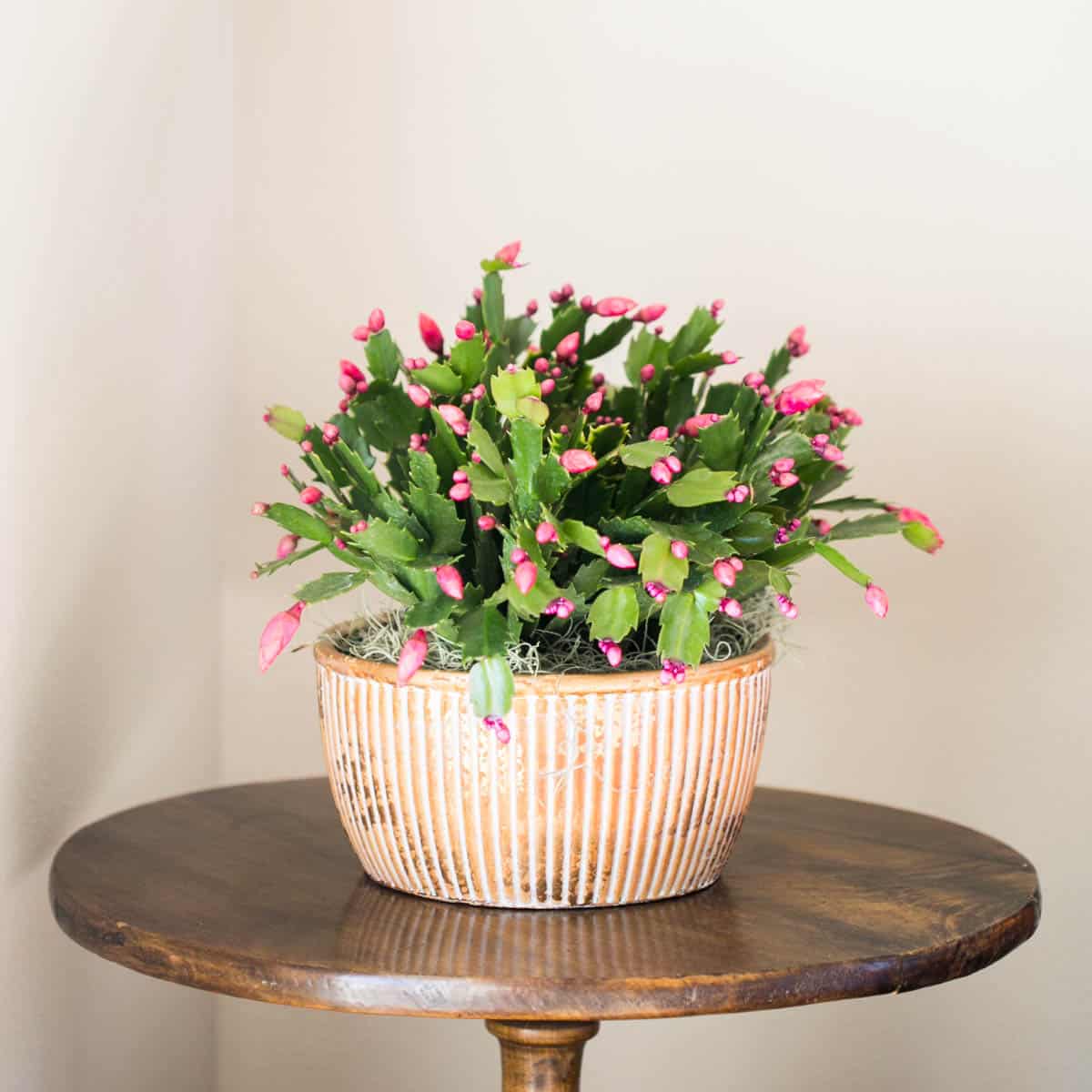Cebu Blue Pothos Plant Care
With silver-toned spade-shaped leaves and an easy-growing growth habit, Cebu Blue Pothos is a unique and fun plant to add to your houseplant collection.
This versatile plant is relatively low maintenance, with beautiful, stunning foliage and massive leaves.

Among the many varieties of Pothos, this vine stands out from the others with its aesthetic blue-green leaves that are often heart-shaped with a pointy end.
Cebu Blue does well in a hanging basket or as a climbing plant. And this tropical vine can be grown both indoors and outdoors.
Let’s learn all about this unique tropical plant and how you can encourage it to thrive!
Hi there! If we haven’t met, my name is Jamie. I’m a “Jill of all trades” with a background in environmental science, professional photography and journalism. As a houseplant grower of 10 years and counting, I’m excited to share tips on Cebu Blue with you today.
About
The Cebu Blue Pothos, known in Latin as Epipremnum pinnatum “Cebu Blue,” is native to the Cebu island in the Philippines. Its natural habitat is full of humidity and moderate temperatures.
This vine enjoys growing under a canopy of other trees and plants and basks in the bright, indirect light of the jungle.
A Cebu Blue can grow up to 40 feet long in the wild. And when given proper care as an indoor plant it will reach ten feet in length!
This stunning plant will grow well in a hanging basket, allowing its tropical vines to grow unhindered. It can also be trained to grow vertically, one of the best ways to encourage new growth.
Growth Phases
There are two distinct phases to Cebu Blue; the juvenile phase and the mature phase.
A juvenile plant will have small, oval-shaped leaves. An indoor plant will usually stay in its juvenile form if it is left as a trailing vine.
A mature plant can develop deep splits in the leaves, similar to a Monstera Deliciosa. A Cebu Blue will reach maturity if it is given a moss pole to climb upon.
Plant Care for Cebu Blue
These plants are popular for a reason- they have a unique sheen and shape to their leaves and add interest and beauty to any room.
Ensure you’re giving your Pothos the proper care and conditions so they can thrive:
Soil
This Pothos variety will benefit from a nutrient soil mix that contains various sized particles that encourage quick drainage.
Use a well-draining potting mix that retains some moisture but doesn’t become waterlogged.
A mixture of one part potting soil, one part orchid bark, and one part perlite works well for drainage.
Get our Pothos soil mix recipe right here.
Lighting
Cebu Blue plants don’t need perfect lighting conditions to grow but they do prefer plenty of bright and indirect sunlight. They will not thrive in dim lighting conditions!
Place your plant in a location where it can receive filtered light levels throughout the day.
Direct sunlight can scorch the plants leaves, causing sun burn, so if you place your plant near a window make sure that the sunlight is indirect. Move the plant about 8-10 feet from a window source with direct sun.
This attractive vine can tolerate lower light conditions, but its growth may slow down. Keep in mind that this specific pothos variety will not thrive in low light.
Water
Like most Pothos varieties, Cebu Blue prefers slightly moist soil. The best approach is to water your plant when the top inch or two of soil is dry.
Every growing environment is unique and the water needs of your plant will be affected by it’s local temperature, humidity, light and soil.
To determine if your plant needs water, simply test the soil gently with the tip of your finger or use a moisture meter.
Use a chemical free water source for your plant to prevent damage from chlorine and fluoride.
It is better to underwater than over water a pothos, as excess water can lead to root rot, causing major problems for your plant and attracting fungal disease.
The bottom of the pot needs adequate drainage holes to allow excess water to drain off of the roots.
Humidity
This plant loves moderately high humidity levels, around 50-60%. Average humidity in a home is around 40-60%, so you may need to increase your levels slightly to keep your Cebu Blue happy.
There are many popular ways to raise humidity, but only a few really work. These are tried and true methods that we recommend:
First, consider the use of a humidifier to raise moisture levels in your home. You can grow your houseplants in the same location to encourage the development of a microclimate full of moisture.
Cebu Blue Pothos grow well in rooms with high humidity, like a laundry room, bathroom or kitchen.
Avoid placing this plant near drafts or heating vents; it prefers stable temperatures.
Temperature
This unique pothos variety prefers temperatures between 60-85°F (15-29°C), however this houseplant can also withstand moderately cool temperatures and may grow well outdoors. Make sure to protect it from frosts, however.
Fertilization
The Cebu Blue Pothos growing season is spring and summer. During this time, feed your plant with a liquid fertilizer at half strength once a month.
You do not need to fertilize during the winter months.
Pruning
Regularly prune your plant will encourage bushier growth and help to control it’s size. Use a clean pair of pruners to make a sharp cut just above a leaf node.
Trim any yellow or dead leaves and any leggy or overgrown vines.
You can quickly propagate new plants from the cuttings, so save a few!
Propagation
A motivated gardener can easily propagate Cebu Blue through stem cuttings. First locate a strong stem with healthy foliage. The cut the leaf just below the node and place just the stem in water until you see tiny roots develop.
Pests and Disease
Cebu Blue Pothos is generally resistant to pests but can occasionally attract mealybugs or spider mites.
Check your plant often for signs of infestation, such as webbing or tiny insects (often mealybugs). If detected, treat the areas with an insecticide or wipe the leaves with water and mild soap.
The Cebu Blue Pothos can get bacterial leaf spot, a disease that causes brown spots on the leaves. This is usually caused by over-watering and poor air circulation. If you notice any of these spots, remove them immediately so the disease doesn’t spread.
How To Use A Moss Pole
Consider using a moss pole instead of a hanging pot if you want your Pothos to grow longer and reach maturity.
A moss pole will allow the Cebu Blue to grow vertically, encouraging the plant to develop a fuller and bushier appearance.
It also allows the lower leaves to receive more light, enhancing their color and overall health.
FAQ’s
Moss poles are made by wrapping sphagnum moss around a support pole and then training the leaves to grow around the pole. There are great tutorials for creating a moss pole like this one.
Unlike other Pothos, Jade pothos and Golden Pothos, Cebu Blue Pothos have silvery-blue leaves with a unique sheen. These plants can be harder to find, and so you may need to look beyond your local nursery to find one. We have had good luck purchasing plants through Etsy.
Growing a Cebu Blue Pothos Outdoors
Cebu Blue Pothos are tropical plants, so they prefer warmer temperatures.
It does best in USDA hardiness zones 10-12, where temps do not drop below 30F (-1C).
However, if you live in a colder climate, you can still grow a Cebu Blue outdoors during the warmer months and then bring it indoors during the winter.
If placing your plant outside, find an area with filtered or dappled sunlight, such as under a tree or a shaded patio.
With proper care, your Cebu Blue Pothos will reward you with its stunning foliage and bring vibrant tropical beauty to your home. Please feel free to ask any questions in the comments below!

